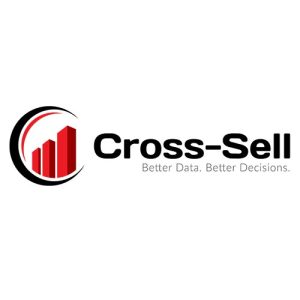In the competitive world of automotive sales, data is king. We say this a lot, but it’s true! Market sales data, in particular, holds immense value for dealerships.
For car dealerships, market data can provide insights into industry trends, consumer preferences and sales performance. It can help dealerships identify areas of strength and weakness and make informed business decisions. But how can dealerships effectively utilize this data? How can it be turned into actionable strategies that drive sales and improve operations?
In this article, we will explore why dealerships should use market sales data. We will share how this data can be analyzed and applied to enhance dealership competitiveness and success. Whether you’re a dealership owner, a sales manager or involved in strategic planning, this guide will provide valuable insights to help you navigate the data‑driven landscape of automotive sales.
The Competitive Edge of Dealership Market Sales Data
In today’s digital age, data is a powerful tool. For dealerships, market sales data can be a game-changer. This data can reveal industry trends and consumer behavior. It can help dealerships understand what customers want and how their preferences are changing.
By analyzing this data, dealerships can stay ahead of the curve. They can anticipate market shifts and adjust their strategies accordingly. In essence, market sales data gives dealerships a competitive edge. It enables them to make data-driven decisions that can enhance their sales performance and boost their market share.
How Sales Performance Analysis Boosts Dealership Success
Sales performance analysis is a key aspect of utilizing market sales data. It involves examining past and current sales figures to assess the dealership’s performance. This analysis can highlight areas of strength and weakness. It can reveal which strategies are working and which ones need improvement.
By understanding their sales performance, dealerships can set realistic sales targets. They can also develop effective strategies to achieve these targets. In short, sales performance analysis can significantly boost a dealership’s success. It provides valuable insights that can drive sales growth and profitability.
Sales Analysis: Turning Data into Strategy
Sales analysis is more than just crunching numbers. It’s about turning raw data into actionable strategies. By analyzing market sales data, dealerships can gain a deeper understanding of their business. They can identify patterns, trends and opportunities.
This information can then be used to inform decision-making. It can guide everything from marketing campaigns to inventory management. In essence, sales analysis turns data into strategy. It empowers dealerships to make informed, data-driven decisions.
Identifying Trends and Consumer Preferences
Market sales data can reveal important trends. These trends can provide insights into consumer preferences and behaviors. For instance, data might show a growing preference for electric vehicles. Or it might reveal a trend towards certain vehicle models or features.
By identifying these trends, dealerships can tailor their offerings to meet consumer demand. They can stay ahead of the curve and maintain a competitive edge.
Setting Realistic Sales Targets
Sales targets are crucial for any dealership. They provide a clear goal to strive for. Market sales data can help set these targets. It can provide a realistic picture of what can be achieved.
By setting realistic sales targets, dealerships can avoid disappointment and maintain motivation. They can also better manage their resources and plan for the future.
Pricing Strategies Informed by Data
Pricing is a critical aspect of dealership operations. It can significantly impact sales and profitability. Market sales data can inform pricing strategies. It can reveal what consumers are willing to pay for certain vehicles or features.
By using data to inform pricing, dealerships can maximize their profits. They can also ensure their prices are competitive and attractive to consumers.
Inventory Management Optimization
Inventory management is another area where market sales data can be invaluable. It can help dealerships optimize their inventory to meet market demand. For example, data might show a high demand for certain vehicle models. Or it might reveal a surplus of certain vehicles in the inventory.
By using this data, dealerships can adjust their inventory accordingly. They can ensure they have the right vehicles in stock to meet consumer demand.
Real-Time Data for Agile Decision-Making
In today’s fast-paced market, agility is key. Dealerships need to be able to adapt quickly to changes. Real-time market sales data can provide this agility. It can allow dealerships to make quick, informed decisions.
With real-time data, dealerships can stay on top of market trends. They can respond swiftly to changes in consumer behavior or market conditions.
Quick Adjustments to Sales Tactics
Sales tactics are not set in stone. They need to be flexible and adaptable. Real‑time market sales data can inform these adjustments. It can reveal what’s working and what’s not. For example, if a certain sales tactic isn’t yielding results, the data will show this. Dealerships can then adjust their tactics accordingly.
Enhancing Customer Targeting and Personalization
Personalization is key in today’s market. Consumers expect tailored experiences and offerings. Market sales data can enhance this personalization. It can provide insights into individual consumer preferences and behaviors. With this data, dealerships can target their marketing efforts more effectively. They can tailor their offerings to meet individual consumer needs.
Predicting Market Conditions and Planning for the Future
Market sales data is not just about the present. It’s also about the future. Dealerships can use this data to predict future market conditions. They can plan their strategies accordingly. This foresight can give dealerships a competitive edge and help them stay ahead of the curve.
Benchmarking and Competitive Analysis
Benchmarking is a crucial part of any business strategy. It involves comparing your performance to that of your competitors. Market sales data can facilitate this benchmarking. It can provide insights into how your dealership stacks up against others. With this information, dealerships can identify areas for improvement. They can strive to outperform their competitors.
Sales Forecasting and Market Share Insights
Sales forecasting is another key aspect of dealership operations. It involves predicting future sales based on past data. Market sales data can inform these forecasts. It can provide insights into potential market share gains or losses. With accurate sales forecasts, dealerships can plan their inventory and marketing strategies more effectively. They can ensure they’re meeting consumer demand while maximizing profitability.
Conclusion: The Power of Data‑Driven Dealerships
In today’s competitive automotive market, data is power. Dealerships that leverage market sales data can gain a significant advantage. They can make informed decisions, optimize operations and improve customer satisfaction. Ultimately, they can increase their profitability and market share.
Embracing a data-driven approach is no longer optional for dealerships. It’s a necessity for survival and growth in the modern automotive industry.
Embracing Market Sales Data for Dealership Growth
Market sales data can be a game‑changer for dealerships. It can provide valuable insights that drive growth and success. By understanding market trends, consumer behavior and sales performance, dealerships can enhance their strategies. They can better meet the needs of their customers and stay ahead of the competition.
The potential benefits of using market sales data are immense. From improved sales forecasting to effective pricing strategies, the opportunities are endless.
Next Steps for Implementing Sales Data Analysis
So, how can dealerships start leveraging market sales data? The first step is to invest in a robust data analysis system. This system should be capable of collecting, analyzing and interpreting large volumes of sales data. It should provide real-time insights that can inform decision-making.
Next, dealerships should train their staff on how to use this system. They should also develop a culture of data-driven decision-making. With these steps, dealerships can unlock the full potential of market sales data.
To learn more about how Cross-Sell can help your dealership, please visit www.cross-sell.com.
To access the WVADA Cross‑Sell website, please click the link: https://www.cross-sell.com/wvada.











